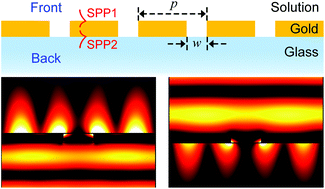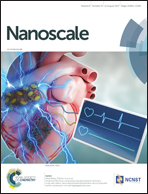Self-reference plasmonic sensors based on double Fano resonances†
Abstract
High-sensitivity plasmonic refractive index sensors show great applications in the areas of biomedical diagnostics, healthcare, food safety, environmental monitoring, homeland security, and chemical reactions. However, the unstable and complicated environments considerably limit their practical applications. By employing the independent double Fano resonances in a simple metallic grating, we experimentally demonstrate a self-reference plasmonic sensor, which significantly reduces the error contributions of the light intensity fluctuations in the long-distance propagation and local temperature variations at the metallic grating, and the detection accuracy is guaranteed. The numerical simulation shows that the two Fano resonances have different origins and are independent of each other. As a result, the left Fano resonance is quite sensitive to the refractive index variations above the metal surface, while the right Fano resonance is insensitive to that. Experimentally, a high figure of merit (FOM) of 31 RIU−1 and a FOM* of 860 RIU−1 are realized by using the left Fano resonance. More importantly, by using the right Fano resonance as a reference signal, the influence of the light intensity fluctuations and local temperature variations is monitored and eliminated in the experiment. This simple self-reference plasmonic sensor based on the double Fano resonances may find important applications in highly-sensitive and accurate sensing under unstable and complicated environments, as well as multi-parameter sensing.



 Please wait while we load your content...
Please wait while we load your content...